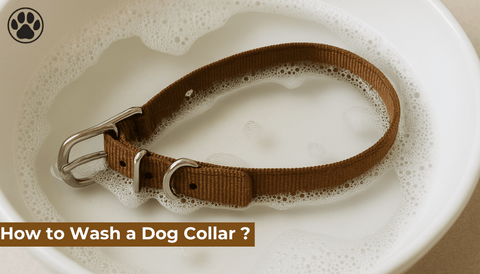
Can Dogs Get Lice from Humans?
of reading - words
Lice infestations are an unpleasant experience for anyone, leading to intense itching and discomfort. As a dog owner, you may wonder if these pests can transfer from humans to dogs. The short answer is no; dogs cannot get lice from humans. However, understanding why this is the case and how to protect your dog from lice is essential for responsible pet care.
In this article, we will explore the nature of lice, their species-specific behavior, the differences between human and dog lice, and what you can do to prevent and treat lice infestations in dogs.
Understanding Lice: What Are They?
Lice are tiny, wingless parasites that live on the skin and hair of their hosts. They feed on blood, skin, or debris, depending on the species. These insects are highly specialized and have evolved to infest specific hosts.
There are two main types of lice:
-
Chewing Lice: These feed on skin debris and oils.
-
Sucking Lice: These feed on blood by piercing the skin.
Human lice and dog lice belong to entirely different species, making cross-species infestations impossible.
Can Humans Give Lice to Dogs?
The answer lies in the species-specific nature of lice. Human lice, such as Pediculus humanus capitis (head lice), are adapted to live exclusively on humans. These lice require human blood and hair conditions to survive. Similarly, dog lice, such as Trichodectes canis and Linognathus setosus, are specialized to infest dogs and cannot thrive on human hosts.
Can Dogs Get Lice at All?
Yes, dogs can get lice, but these lice come from other dogs or contaminated environments, not humans. Dog lice are species-specific and cannot infest humans. Dog lice infestations are more common in environments where multiple dogs are in close contact, such as shelters or boarding facilities.
Symptoms of Lice Infestations in Dogs
Recognizing the signs of lice in dogs is crucial for early intervention. Common symptoms include:
-
Excessive Scratching: Persistent itching is a primary indicator of lice.
-
Hair Loss: Patches of missing fur, especially around the ears, neck, shoulders, and tail.
-
Dry or Scaly Skin: Lice can cause skin irritation and dryness.
-
Visible Lice or Nits: Small, white, or brown insects and their eggs (nits) may be visible on the fur.
-
Restlessness: Infested dogs may exhibit discomfort or irritability.
If you notice these symptoms, consult your veterinarian for diagnosis and treatment.
How Do Dogs Get Lice?
Dogs acquire lice through direct contact with infested animals or contaminated objects. Common sources include:
-
Dog-to-Dog Contact: Close interactions with an infested dog.
-
Shared Items: Brushes, bedding, or collars used by an infested dog.
-
Crowded Environments: Shelters, kennels, and dog parks with poor hygiene practices.
Preventing Lice Infestations in Dogs
Prevention is key to keeping your dog lice-free. Here are practical steps you can take:
1. Regular Grooming: Brush your dog’s coat regularly to check for lice and nits.
2. Hygiene Practices: Wash your dog’s bedding, collars, and grooming tools frequently.
3. Avoid Sharing Items: Do not share brushes, bedding, or other personal items between dogs.
4. Veterinary Check-Ups: Schedule regular veterinary visits to monitor your dog’s overall health.
5. Maintain Clean Environments: Keep your home and your dog’s living area clean and free from potential contaminants.
Treating Lice in Dogs
If your dog does contract lice, treatment is straightforward with the help of your veterinarian. Common treatment options include:
1. Topical Insecticides: Medicated shampoos, sprays, or spot-on treatments can eliminate lice. Always use products specifically designed for dogs.
2. Oral Medications: In severe cases, your vet may prescribe oral medications to kill lice.
3. Environmental Cleaning: Thoroughly clean your home, including bedding and other items, to prevent re-infestation.
4. Isolation: Isolate infested dogs to prevent the spread of lice to other pets.
Differences Between Lice and Fleas
While lice and fleas are both parasitic pests, they differ significantly:
-
Lice: Species-specific and slower moving, lice are less common but easier to spot.
-
Fleas: Highly mobile and capable of infesting multiple species, fleas are more common and harder to control.
Knowing these differences can help you identify and address the specific pest affecting your dog.
When to See a Veterinarian
If you suspect your dog has lice, it’s essential to seek veterinary care. A vet can:
-
Confirm the presence of lice through microscopic examination.
-
Recommend safe and effective treatments.
-
Provide guidance on preventing future infestations.
Frequently Asked Questions (FAQ)
1. Can my dog get lice from me? No, human lice cannot infest dogs due to their species-specific nature.
2. Can I get lice from my dog? No, dog lice cannot infest humans for the same reason. They are adapted to survive only on dogs.
3. What should I do if my dog has lice? Consult your veterinarian for diagnosis and treatment. Use prescribed medications and maintain hygiene in your home.
4. Are lice contagious between dogs? Yes, lice are highly contagious among dogs and can spread through direct contact or shared items.
5. How can I tell if my dog has lice or fleas? Lice are slower moving and species-specific, while fleas are highly mobile and can infest multiple species. Your vet can help identify the pest.
Conclusion
Dogs cannot get lice from humans, as lice are species-specific parasites. However, dogs can contract lice from other dogs or contaminated environments. Understanding the symptoms, prevention methods, and treatment options is vital for maintaining your dog’s health. Regular grooming, hygiene practices, and veterinary care are the best defenses against lice infestations.
If you suspect your dog has lice, consult your veterinarian promptly to ensure effective treatment and prevent further complications.




